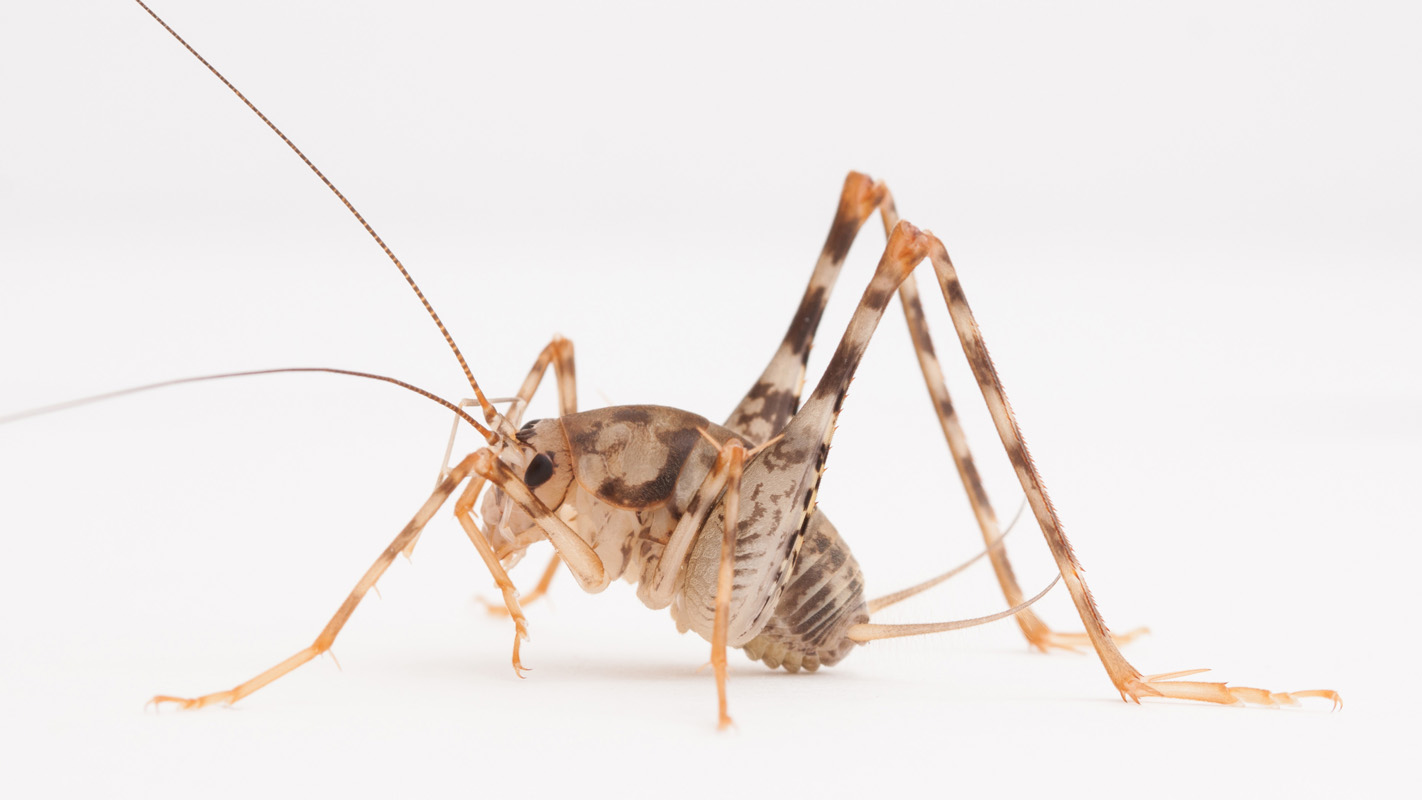Asian Camel Crickets Now Common in U.S. Homes

For Immediate Release
With their long, spiky legs and their propensity for eating anything, including each other, camel crickets are the stuff of nightmares. Research from North Carolina State University finds that non-native camel cricket species have spread into homes across the eastern United States.
“The good news is that camel crickets don’t bite or pose any kind of threat to humans,” says Dr. Mary Jane Epps, a postdoctoral researcher at NC State and lead author of a paper about the research.
The research stems from a chance encounter, when a cricket taxonomist found an invasive cricket in the home of one of the NC State researchers. Wondering how common the species might be in the U.S., the researchers tapped in to their citizen science network, which is part of Dr. Rob Dunn’s Your Wild Life lab. Dunn is an associate professor of biological sciences at NC State and co-author of the paper.

The researchers asked the public whether they had camel crickets (also known as cave crickets) in their homes and, if so, to send in photos or mail in physical specimens. The responses they got were surprising.
The most common species reported, by more than 90 percent of respondents, was the greenhouse camel cricket (Diestrammena asynamora). Native to Asia, this species was first sighted in the U.S. in the 19th century – but it was thought to be rare outside of commercial greenhouses. Instead, the researchers found that it is now far more common than native camel crickets in and near homes east of the Mississippi.
“We don’t know what kind of impact this species has on local ecosystems though it’s possible that the greenhouse camel cricket could be driving out native camel cricket species in homes,” Epps says.
The researchers also sampled the yards of 10 homes in Raleigh, North Carolina. They found large numbers of greenhouse camel crickets, with higher numbers being found in the areas of the yards closest to homes.
The photos submitted by the public turned up a second surprise as well.
“There appears to be a second Asian species, Diestrammena japanica, that hasn’t been formally reported in the U.S. before, but seems to be showing up in homes in the Northeast,” Epps says. “However, that species has only been identified based on photos. We’d love to get a physical specimen to determine whether it is D. japanica.”
The researchers stress that homeowners shouldn’t panic if they find camel crickets in their homes.
“Because they are scavengers, camel crickets may actually provide an important service in our basements or garages, eating the dead stuff that accumulates there,” says Dr. Holly Menninger, director of public science in the Your Wild Life lab at NC State and co-author of the paper.
“We know remarkably little about these camel crickets, such as their biology or how they interact with other species,” Menninger says. “We’re interested in continuing to study them, and there’s a lot to learn.”
The paper, “Too big to be noticed: Cryptic invasion of Asian camel crickets in North American houses,” is published online in the open-access journal PeerJ. The paper was co-authored by Nathan LaSala, who did the work while a student at Enloe High School. The research was supported by National Science Foundation grant number 0953390.
-shipman-
Note to Editors: The study abstract follows.
“Too big to be noticed: Cryptic invasion of Asian camel crickets in North American houses”
Authors: Mary Jane Epps, Holly L. Menninger, and Robert R. Dunn, North Carolina State University; Nathan LaSala, Enloe High School
Published: Sept. 2, PeerJ
DOI: http://dx.doi.org/10.7717/peerj.523
Abstract: Despite the rapid expansion of the built environment, we know little about the biology of species living in human-constructed habitats. Camel crickets (Rhaphidophoridae) are commonly observed in North American houses and include a range of native taxa as well as the Asian Diestrammena asynamora (Adelung), a species occasionally reported from houses though considered to be established only in greenhouses. We launched a continental-scale citizen science campaign to better understand the relative distributions and frequency of native and nonnative camel crickets in human homes across North America. Participants contributed survey data about the presence or absence of camel crickets in homes, as well as photographs and specimens of camel crickets allowing us to identify the major genera and/or species in and around houses. Together, these data offer insight into the geographical distribution of camel crickets as a presence in homes, as well as the relative frequency and distribution of native and nonnative camel crickets encountered in houses. In so doing, we show that the exotic Diestrammena asynamora not only has become a common presence in eastern houses, but is found in these environments far more frequently than native camel crickets. Supplemental pitfall trapping along transects in 10 urban yards in Raleigh, NC, revealed that D. asynamora can be extremely abundant locally around some homes, with as many as 52 individuals collected from pitfalls in a single yard over two days of sampling. The number of D. asynamora individuals present in a trap was negatively correlated with the trap’s distance from a house, suggesting that these insects may be preferentially associated with houses but also are present outside. In addition, we report the establishment in the northeastern United States of a second exotic species, putatively Diestrammena japonica Blatchley, which was previously undocumented in the literature. Our results offer new insight into the relative frequency and distribution of camel crickets living in human homes, and emphasize the importance of the built environment as habitat for two little-known invading species of Orthoptera.
- Categories:


